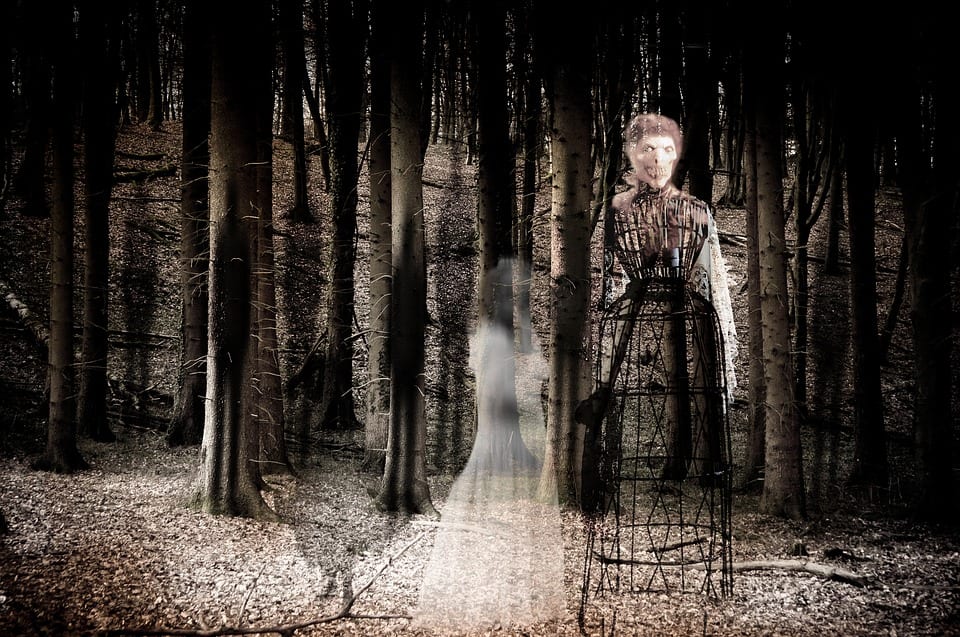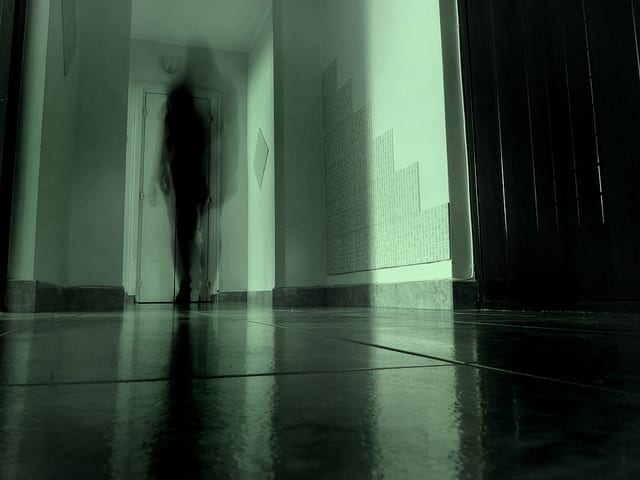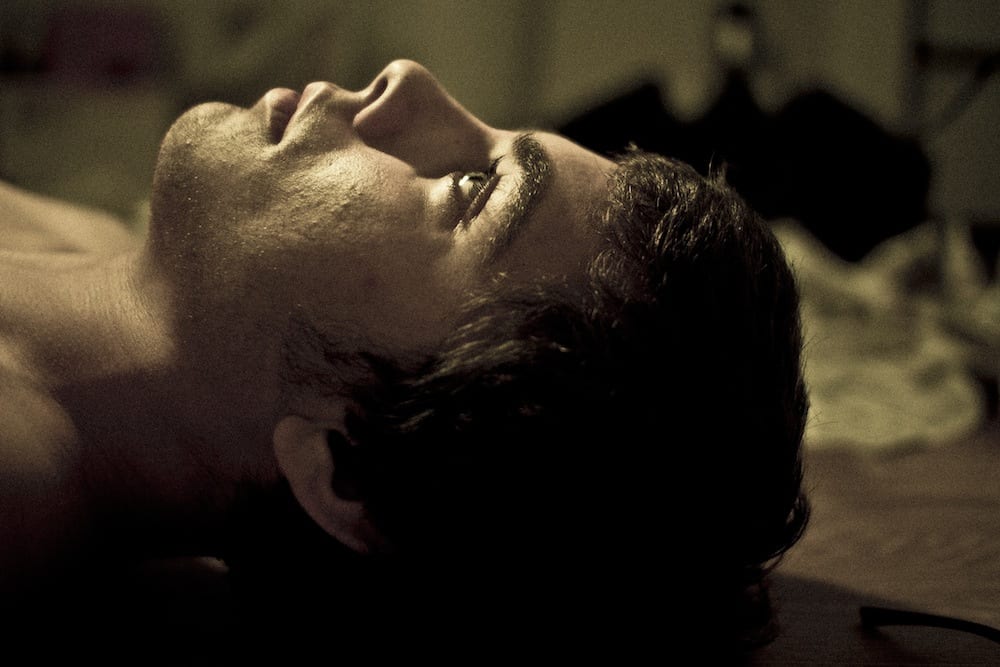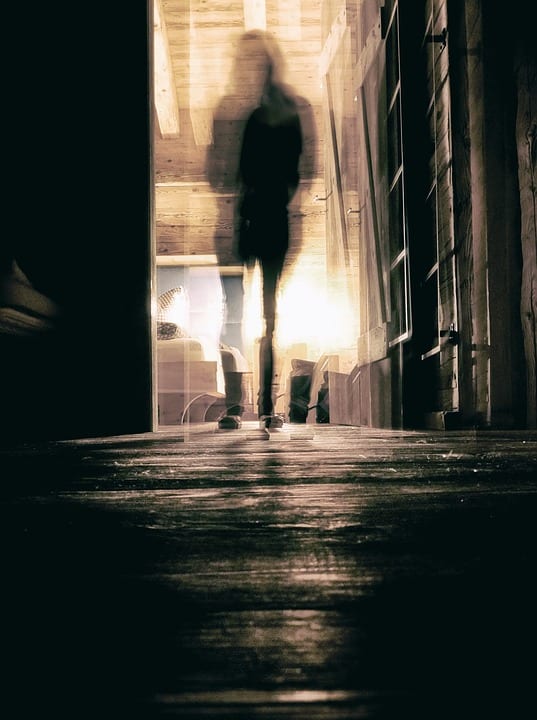Trending Now
If you believe in ghosts or even think you’ve seen a ghost in your lifetime, you are not alone.
In fact, 72% of Americans believe in some kind of afterlife, and with those odds, people are bound to think they’ve seen spirits among us. Maybe that’s 45% of Americans believe in ghosts and 28% claim to have seen one.
But the fact remains that there has never been any actual proof that ghosts exist. All we have are eyewitness accounts and ambiguous photographs/videos that are, at the end of the day, inconclusive.

Photo Credit: Pixabay
So what causes so many people from all across the spectrum to believe they see ghosts? Psychologists, neuroscientists, and even the world’s only full-time paranormal investigator all point to different scientific, psychological, and environmental factors that influence the way our brain works and help explain why there are so many phantoms in our midst.
First, let’s start with Joe Nickell, a senior research fellow at the Committee for Skeptical Inquiry and supposedly the single full-time paranormal investigator in the world. Nickell has been investigating these claims for nearly five decades, yet he has never seen nor found any definitive proof that ghosts exist. One explanation Nickell offers for why there are so many ghost sightings is what’s called infrasound, or low-frequency sound below the “normal” 20 Hz limit of human hearing.
Famed astrophysicist Neil deGrasse Tyson says that at 18 Hz, infrasound resonates with the structure of the human eyeball and can cause your vision to vibrate, resulting in hallucinations.

Photo Credit: Facebook, Neil deGrasse Tyson
Infrasound can be caused by a number of things, including severe weather, humpback whales, and machines such as fans and engines.
These low frequencies cause various symptoms to the human body and brain, including chills, depression, perspiration, hallucinations, and general feelings of uneasiness and fear. One real-life example concerned a group of factory workers who felt uneasy in a certain part of the building. An investigation showed that an air conditioning system was the cause of the infrasound.
Another instance occurred in a university lab where some people refused to work because they felt uneasy and some complained of dizziness. After some investigation, infrasound emanating from a fan in the lab was determined to be the source of the bad feelings. A neuroscientist showed that infrasound and electromagnetic fields (EMF) have the ability to affect the temporal lobes of the brain and can produce feelings of a presence in a room or the sensation of being touched.

Photo Credit: Flickr, Rachel Titiriga, CC2.0
Another intriguing possibility that explains why people think they see ghosts is sleep paralysis. This phenomenon occurs when a person wakes up while still in the REM stage of sleep when dreams occur and he or she is unable to move. Because people are still in a dream-inducing state, they may interpret what they see while feeling paralyzed as ghostly activity.
People who have experienced sleep paralysis (also called waking dreams) report having audio and visual hallucinations and have trouble breathing. Sometimes these terrifying dreams result in reports of ghost encounters.
Studies have shown that roughly 30-40% of people have experienced sleep paralysis.

Photo Credit: Flickr, Jacob Stewart, CC2.0
Joe Nickell also points out that person grief can be the genesis for ghost sightings. Nickell says that people who lose loved ones hope that these folks are still around in some way, and that seeing a ghost of someone who has passed away is a psychological way of coping with grief. One study showed that 60% of people who had lost a spouse claimed to see or hear their dead loved ones.
One neuroscientist points out that our brains experience phenomena in a very complex manner. He says,
“We know from various studies that our information processing is not “bottom-up”—we don’t just see/hear/feel our environments. Instead, our perception of reality is a complex interplay between bottom-up and top-down processes. Top-down processes refer to the expectations, beliefs, and context that shape our perceptions and influence our interpretations. Even the basic bottom-up processes are not exact copies of reality but approximations shaped by context. How we experience our surroundings is a complex simulation of our mind that leaves a lot of space for interpretation and quirks.”
In other words, all of our life experiences and state of mind influence how we react to every situation, including ones where we think we might have an encounter with the paranormal.

Photo Credit: Max Pixel
So, although many of us would like to believe that ghosts and the spirits of our deceased loved ones inhabit the same places we do, the fact is that there has never been a shred of evidence that proves this to be true. These encounters are the result of human psychology and various other factors including our surroundings and even the dreaded phenomenon of sleep paralysis.
But if you are a believer, nothing will probably convince you otherwise.






